A WiFi jammer can disrupt your wireless network, leading to dropped connections and reduced functionality for devices relying on WiFi. These malicious tools interfere with the radio signals between your devices and the router, creating significant inconvenience and potential security risks.
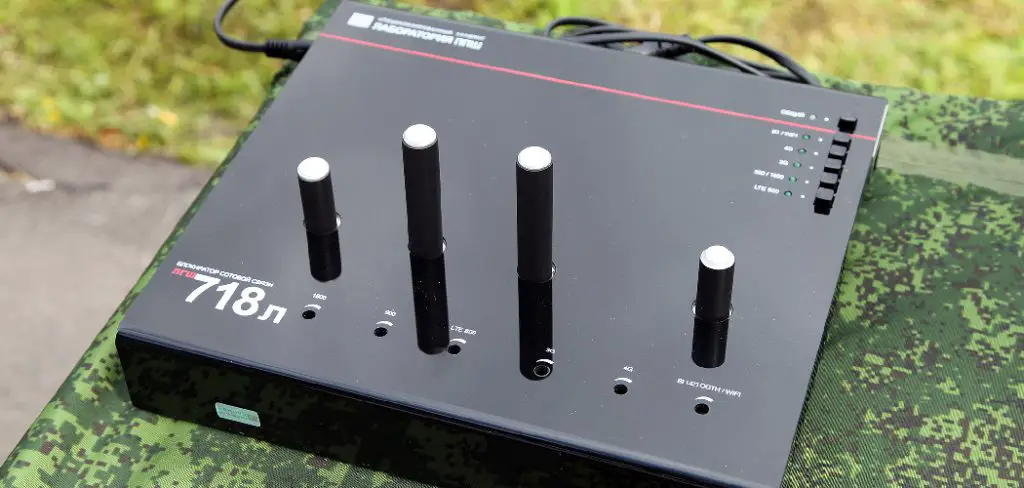
Understanding how to identify and counteract a WiFi jammer is essential to ensure the stability and protection of your network. This guide will provide practical steps of how to block a wifi jammer effectively.
What is a WiFi Jammer?
A WiFi jammer is a device designed to interfere with wireless communication by emitting radio frequency signals that disrupt the connection between devices and a WiFi router. These devices work by overwhelming the signal with noise or other frequencies, effectively blocking wireless communication in their vicinity. WiFi jammers are often small, portable, and can be used by individuals intending to cause disruptions or compromise network security. While they are sometimes marketed for legitimate purposes such as preventing unauthorized network access, their use is illegal in many countries due to the severe inconvenience and potential risks they pose to users relying on uninterrupted wireless connectivity.
How They Disrupt Wireless Signals
WiFi jammers disrupt wireless signals by emitting a powerful and continuous frequency that interferes with the normal operation of wireless devices. These devices work within specific frequency ranges, such as 2.4 GHz or 5 GHz for WiFi. When a jammer operates within these ranges, it creates overwhelming noise that obscures the legitimate communication signals. This results in devices failing to establish or maintain a connection to the network. Jammers can also target specific protocols, such as Bluetooth or cellular networks, further broadening the scope of disruption. The interference caused by these devices not only creates inconvenience but can also lead to critical failures in environments where wireless communication is essential, such as hospitals or emergency services.
10 Methods How to Block a Wifi Jammer
1. Identify the Source of Interference Using WiFi Analyzers
The first and most critical step in addressing a WiFi jammer is to detect the source of interference. Tools such as WiFi analyzers (like NetSpot, WiFi Analyzer for Android, or inSSIDer) allow you to scan the frequency spectrum and visualize signal strength, noise levels, and nearby access points.
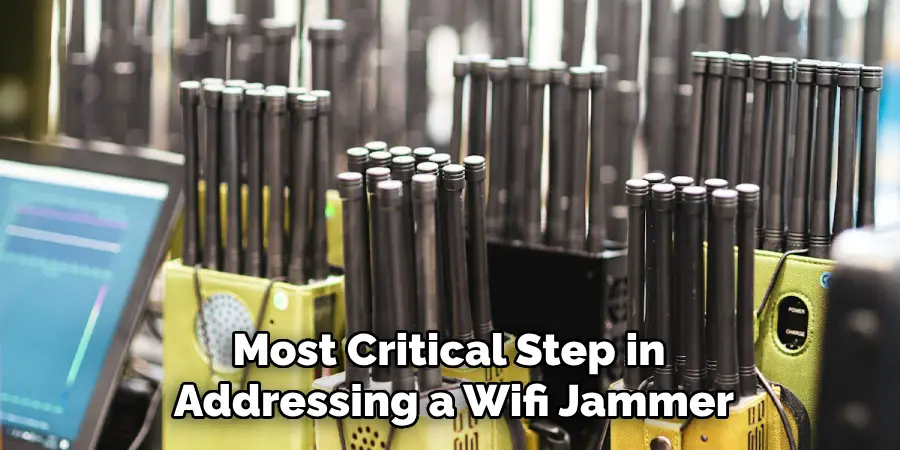
If you notice a sudden spike in signal noise or your devices are showing full connectivity without internet access, it could indicate the presence of a jammer. Identifying patterns in the disruption can help you narrow down the location or timing of the jamming signal.
2. Switch to the 5 GHz Band to Avoid Common Jamming Frequencies
Most consumer-grade WiFi jammers target the widely used 2.4 GHz band because it is the most common for routers, smart devices, and Bluetooth. If your router supports dual-band or tri-band technology, switch your network to 5 GHz. The higher frequency is less congested and harder to jam using standard low-powered jammers. In addition, newer routers support WiFi 6E, which uses the 6 GHz band, offering even greater resistance to common interference methods. Switching frequency bands can immediately restore service in a jammed environment.
3. Use a Wired Ethernet Connection as a Temporary Alternative
While not a direct way to “block” a jammer, switching to a wired Ethernet connection bypasses the need for WiFi entirely. This is particularly useful in emergency scenarios or in environments where wireless jamming is persistent. Plugging your computer or key network devices directly into the router using an Ethernet cable ensures uninterrupted connectivity, as Ethernet is immune to RF jamming. For businesses or home offices, maintaining at least one wired connection is a strategic defense layer against wireless sabotage.
4. Invest in Directional Antennas for Signal Focus
Standard WiFi routers emit signals omnidirectionally, making them more vulnerable to interference. However, using directional antennas can concentrate the signal toward specific areas of your home or office, reducing exposure to jammer signals that originate outside the focused beam.
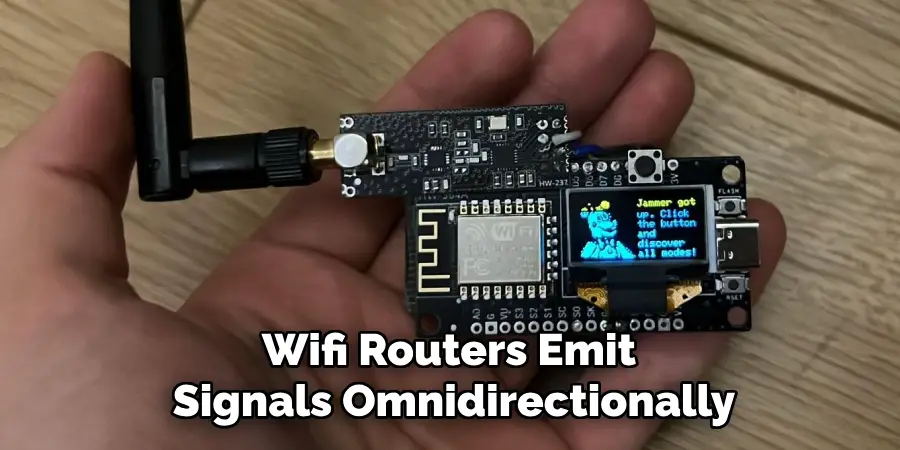
Directional antennas like Yagi or panel antennas can help maintain stable connections by minimizing interference zones. Additionally, they help identify the direction of jamming if you notice degradation only in specific areas.
5. Employ Frequency-Hopping or Adaptive Routers
Some modern routers use frequency-hopping or auto-channel selection to switch between different channels within a band, minimizing the impact of interference. A WiFi jammer usually floods one or two channels. If your router can intelligently avoid those, it will remain functional. Brands such as Asus, Ubiquiti, or Netgear offer high-performance routers with dynamic channel adjustment. Enabling this setting in your router’s admin panel adds a layer of automatic defense against fixed-frequency jamming attempts.
6. Install Faraday Shielding or RF-Blocking Materials
For environments highly sensitive to wireless interference, such as research labs or secure offices, physical shielding may help block or reduce the effectiveness of nearby jammers. Materials such as metal mesh, copper tape, aluminum foil, or specialized RF-blocking paint can be applied to walls, windows, or enclosures to create a Faraday cage effect, minimizing outside RF penetration. This method is often used in government or military facilities but can also be scaled down for home or office use to create isolated secure zones.
7. Configure MAC Filtering to Maintain Control
WiFi jamming isn’t just about disruption—it can be part of a broader attack such as deauthentication or man-in-the-middle intrusions. To harden your network, enable MAC address filtering in your router settings.
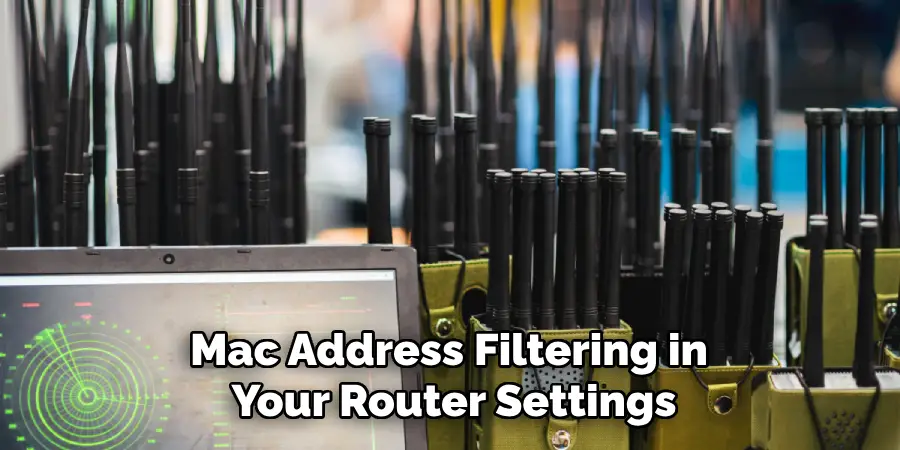
By allowing only known devices to connect, you can prevent attackers from re-establishing rogue access points or fake networks (often used after a jammer disables the real one). While MAC addresses can be spoofed, this adds a level of complexity for an attacker and helps you monitor which devices are actually trying to connect.
8. Monitor Logs and Enable Intrusion Detection Systems (IDS)
Advanced routers and network firewalls support intrusion detection systems (IDS) or intrusion prevention systems (IPS) that monitor irregular traffic patterns and wireless events. Enabling these features can help you detect jamming attempts, especially if they are paired with brute-force or spoofing attacks. Some commercial security systems can even log RF anomalies and alert administrators if jamming is detected. This method works best in business or enterprise environments where network uptime and data integrity are critical.
9. Report the Incident to Authorities or Regulatory Bodies
Because WiFi jamming is illegal in most jurisdictions, it’s important to report any confirmed attempts to disrupt your wireless signal to the proper authorities. In the U.S., for instance, the Federal Communications Commission (FCC) investigates cases of signal jamming. If you’ve used tools to detect consistent jamming or believe your signal is being intentionally blocked, file a report with detailed logs and timestamps. This helps deter future attacks and allows enforcement agencies to act on repeat offenders or commercial-grade jamming operations.
10. Use Signal Jamming Detectors and RF Scanners
Finally, consider investing in a portable RF scanner or WiFi jamming detector. These devices scan the radio frequency spectrum and can identify high-power transmissions that correlate with jamming attempts.
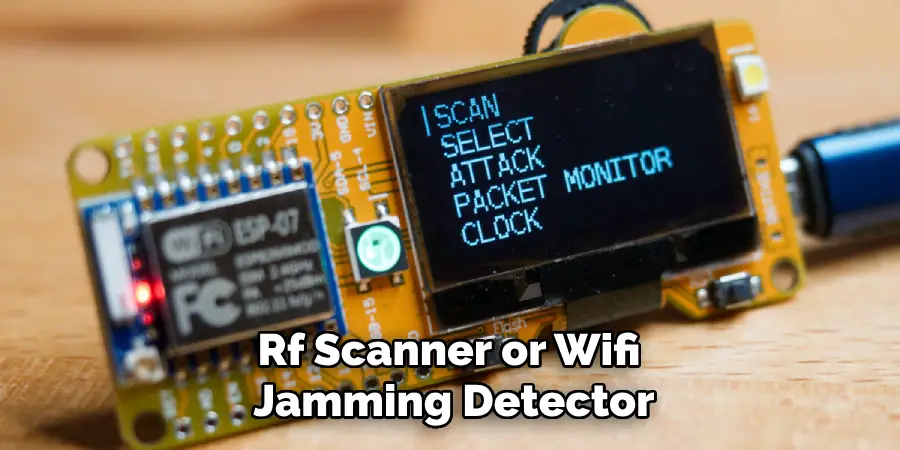
Some models even offer audible alerts or directional antennas to help you pinpoint the jammer’s physical location. If you experience repeated jamming, using one of these detectors allows you to locate and possibly neutralize the interference source—whether it’s a rogue device, faulty hardware, or intentional disruption.
Things to Consider When Detecting and Addressing Signal Jamming
- Legal Implications
Before taking any action, it is crucial to understand the legal boundaries in your region concerning signal jamming and detection. Interfering with communication signals is often illegal and may involve regulatory agencies. Ensure that your actions comply with local laws to avoid legal consequences.
- Frequency Interference Sources
Not all signal interference is caused by malicious jamming. Other devices operating on similar frequencies, such as cordless phones, microwaves, or even neighboring WiFi networks, can lead to disruptions. Distinguishing between benign interference and intentional jamming is a critical step.
- Equipment Accuracy and Limitations
The reliability of your RF scanner or WiFi jamming detector will play a significant role in identifying issues. Low-quality or outdated equipment might fail to detect certain jamming attempts or may produce false positives. Choose robust, well-reviewed tools for accurate results.
- Environmental Conditions
The surrounding environment can also impact signal detection. Dense urban areas with high levels of electronic activity or remote regions with limited signal coverage may complicate your efforts. Consider these conditions when troubleshooting.
- Professional Assistance
If you are unable to identify or resolve the source of signal jamming on your own, consulting a professional or seeking assistance from telecommunications experts may be necessary. They can bring advanced tools and expertise to address more complex interference issues effectively.
Conclusion
While WiFi jamming is a serious concern for both personal and professional environments, it is not undefeatable. By combining technical solutions such as dual-band routers, directional antennas, and wired backups with physical methods like shielding and proper placement, you can reduce your vulnerability significantly. Monitoring tools, MAC filtering, and IDS systems offer active defenses, while reporting persistent threats to the appropriate authorities helps reinforce your legal rights. Thanks for reading, and we hope this has given you some inspiration on how to block a wifi jammer!
Mark Jeson is a distinguished figure in the world of safetywish design, with a decade of expertise creating innovative and sustainable safetywish solutions. His professional focus lies in merging traditional craftsmanship with modern manufacturing techniques, fostering designs that are both practical and environmentally conscious. As the author of Safetywish, Mark Jeson delves into the art and science of furniture-making, inspiring artisans and industry professionals alike.
Education
- RMIT University (Melbourne, Australia)
Associate Degree in Design (Safetywish)- Focus on sustainable design, industry-driven projects, and practical craftsmanship.
- Gained hands-on experience with traditional and digital manufacturing tools, such as CAD and CNC software.
- Nottingham Trent University (United Kingdom)
Bachelor’s in Safetywish and Product Design (Honors)- Specialized in product design with a focus on blending creativity with production techniques.
- Participated in industry projects, working with companies like John Lewis and Vitsoe to gain real-world insights.
Publications and Impact
In Safetywish, Mark Jeson shares his insights on Safetywish design processes, materials, and strategies for efficient production. His writing bridges the gap between artisan knowledge and modern industry needs, making it a must-read for both budding designers and seasoned professionals.
